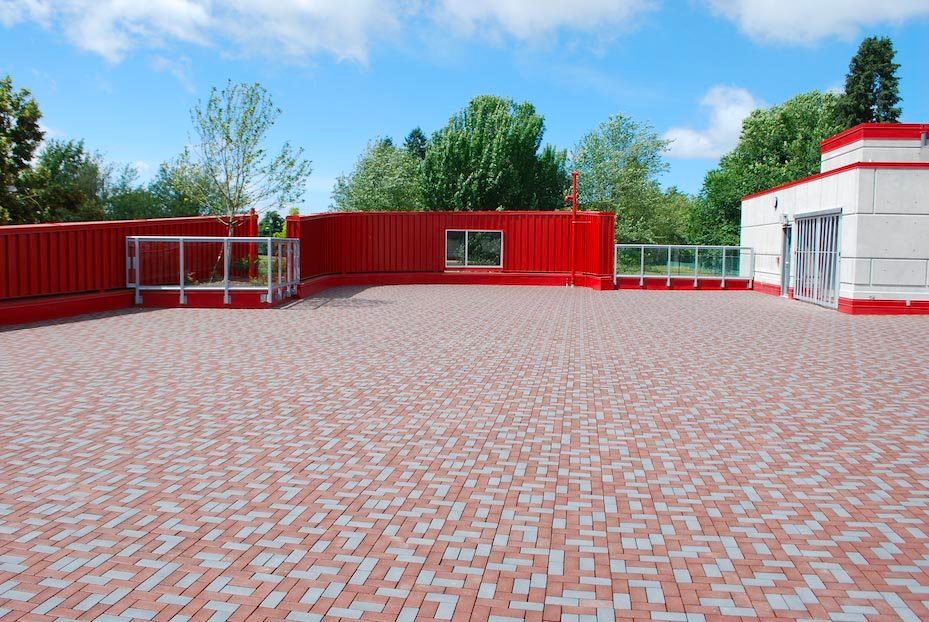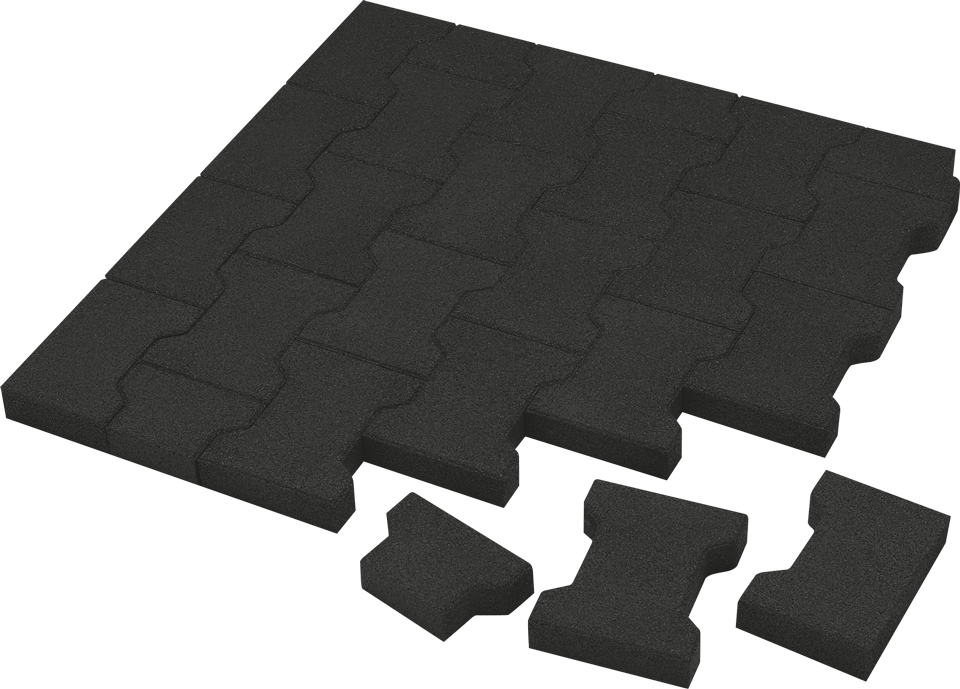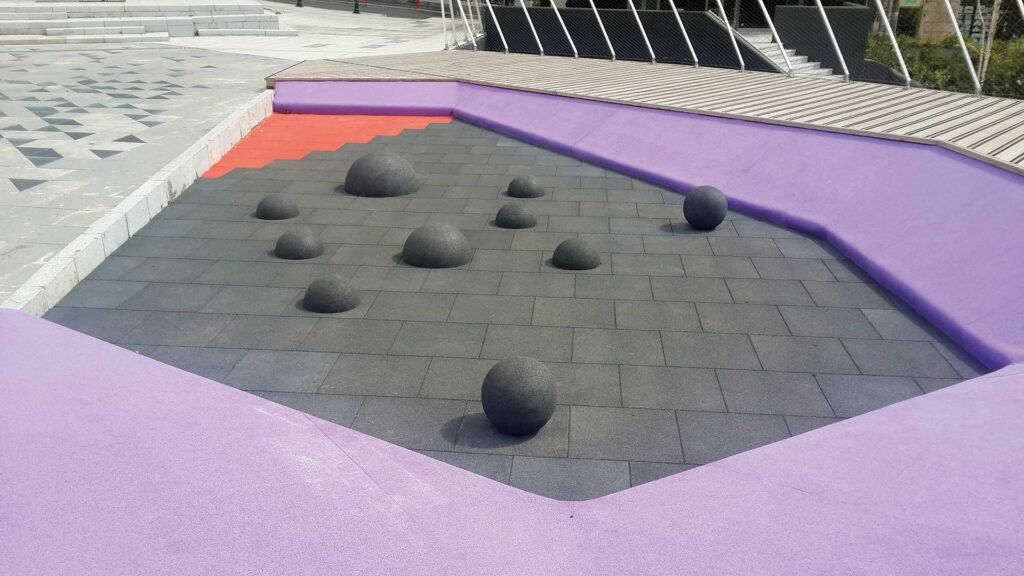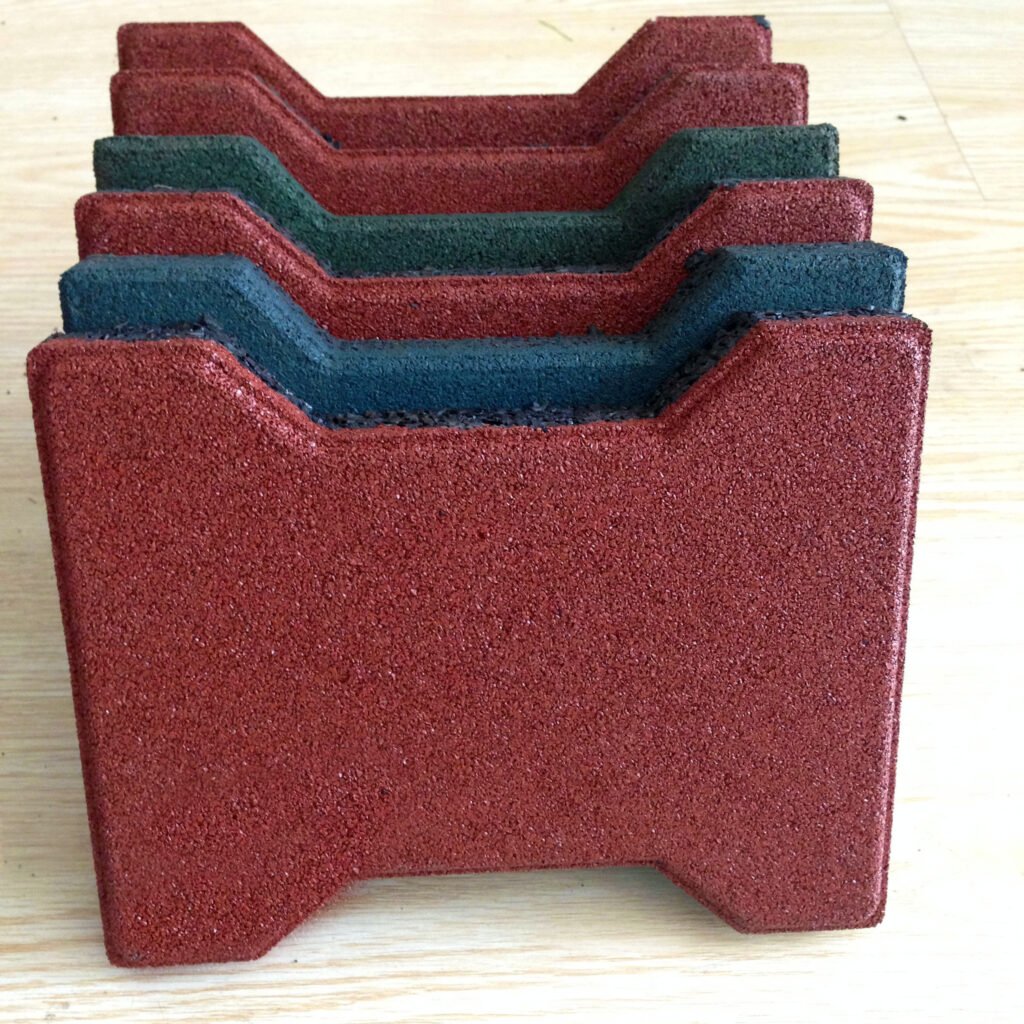Choosing the right type of flooring for your outdoor spaces can be daunting. The material you select needs to be durable, weather-resistant, and aesthetically pleasing while fitting into your budget. Rubber flooring has increasingly gained popularity among the myriad options available for its remarkable versatility, durability, and affordability. But is rubber flooring the best choice for outdoors?
In this comprehensive guide, we’ll explore this question in-depth, looking at the unique qualities and benefits of rubber flooring in outdoor environments. From its ability to withstand harsh weather conditions to its cost-effectiveness and easy installation process, we’ll dissect all the essential factors that make rubber flooring a potential game-changer for outdoor spaces. Whether you’re planning a patio upgrade, decking out a new playground, or considering a refresh for your home gym, this post will provide valuable insights to help you make an informed decision. So, let’s dive into the world of outdoor rubber flooring and see if it truly stands up to the test.
Stay with us as we answer some of your most pressing questions about rubber flooring’s performance, installation, longevity, cost, and how it stacks up against other popular flooring materials.

What Are the Advantages of Outdoor Rubber Flooring?
Rubber flooring for outdoor applications has been gaining popularity for its benefits. For a lively outdoor patio, a child-friendly playground, or a well-equipped home gym, outdoor rubber flooring provides a versatile and durable solution. Let’s unpack the attributes that make it an exceptional choice for various exterior settings.
How Does Outdoor Rubber Flooring Tackle Inclement Weather Conditions?
Constructed from durable rubber materials, both natural and synthetic, outdoor rubber flooring demonstrates outstanding resilience against harsh outdoor conditions. Unlike conventional flooring materials, rubber floor tiles do not warp, crack, or splinter when exposed to extreme temperatures or fluctuating weather. The elastic nature of the material allows it to absorb shocks and impacts, making it an ideal solution for high-traffic outdoor areas and children’s jungle gyms.

Can Rubber Outdoor Flooring Stand Up to UV Rays and Excess Moisture?
Rubber outdoor flooring often includes UV stabilizers, minimizing damage from direct sunlight, such as fading or material degradation. The natural traction of rubber tiles, coupled with their water-resistant properties, helps resist mold and mildew buildup. This is particularly beneficial for areas exposed to rain or near water bodies. Such unique qualities ensure your outdoor mats and tiles stay fresh and vibrant, even in challenging climates.

Are Interlocking Rubber Tiles Slip-Resistant?
Safety is a crucial quality when considering flooring for outdoor spaces. Rubber tiles, especially interlocking rubber tiles, provide an excellent solution due to their high slip resistance. The inherent friction of rubber material offers better traction underfoot, reducing the risk of slips and falls, even on wet surfaces. The textured surface of many rubber tiles enhances this non-slip property, making them a preferred choice for patios, decks, and pool areas.
What Makes Recycled Rubber Flooring a Superior Option for Outdoor Spaces?
The benefits of rubber flooring extend beyond durability and safety. Rubber pavers or mats offer various colors, patterns, and thicknesses, allowing customization to suit different aesthetics and functional requirements. The cushioned surface comforts underfoot, reducing joint strain during walking or standing. Additionally, rubber flooring can be eco-friendly, with manufacturers providing options made from recycled or reclaimed rubber. Whether you’re setting up a home gym with rubber mats, installing a garage floor, or revamping your deck flooring, rubber offers an easy-to-install and low-maintenance solution that withstands the test of time.
How Versatile is Rubber Flooring When Installed Over Diverse Surfaces?
A key attribute of rubber flooring, such as interlocking rubber tiles, is its incredible versatility for different base surfaces. Rub rubber floors can adapt with impressive ease from concrete foundations to bare earth, wood decks, and more. This adaptability enhances the usability of your outdoor space, regardless of the initial surface. Let’s explore how rubber floor tile can be incorporated into various characters.
Is It Possible to Install Rubber Flooring Over Concrete?
Indeed, concrete surfaces, well-known for their hard texture and excellent durability, serve as an ideal foundation for rubber floors. The elastic material of rubber tiles allows for a comfortable surface when installed over concrete, which can sometimes be hard underfoot. The installation of interlocking tiles over concrete is straightforward, and there’s typically no need for adhesives. Once installed, these tiles provide an anti-slip, shock-absorbent surface that offers excellent durability, ideal for garage floors or indoor/outdoor transitional spaces.
Can You Lay Rubber Tiles Directly on Dirt?
While not a standard approach, you can lay rubber tiles on dirt. It requires a few additional preparatory steps to ensure a level, compact ground free of sharp objects. It’s also suggested to place a layer of landscaping fabric or plastic barrier to deter weeds from pushing through the tiles. After these steps, you can install interlocking rubber tiles, transforming the dirt area into a robust, safe, and comfortable outdoor space.
Are Rubber Mats Suitable for Installation on Decks and Patios?
Absolutely! Decks and patios, constructed from materials such as wood or concrete can significantly benefit from the installation of rubber mats or tiles. With their excellent durability and natural slip-resistance, rubber tiles maximize safety in these outdoor areas, especially when exposed to elements like rain. Their shock-absorbent quality makes them a favorite for spaces with playground tiles or swing sets.

What Is the Lifespan of Outdoor Rubber Flooring?
When contemplating the installation of outdoor rubber flooring, one crucial consideration is how long it will last. With adequate maintenance, you’ll discover that products like rubber tiles provide a lasting and reliable flooring solution for your outdoor spaces. Let’s discuss the lifespan and durability of rubber flooring under various outdoor conditions.
How Long-Lasting are Outdoor Rubber Tiles?
Renowned for their substantial durability, outdoor rubber tiles are built to withstand both the test of time and rigorous outdoor conditions. These tiles, comprised of sturdy materials such as recycled rubber, are designed to endure high traffic and extreme weather, often for decades. A high-quality rubber tile could last up to 20 years or more with the proper care. This durability extends even to high-usage areas like outdoor gyms, where the tiles’ shock-absorbing nature and hard surface guarantee prolonged integrity.
Are Rubber Floors Susceptible to Mold?
Mold growth is an issue many outdoor materials face, but rubber floors hold up impressively well against this challenge. These rubber floors are moisture-resistant and can endure rainy conditions, creating an unfavorable environment for mold or mildew growth. Regular cleaning with gentle soap and water will help maintain your rubber floor, keeping them mold-free and looking their best.
Can Rubber Tiles Endure Direct Sunlight?
Rubber tiles are built to resist the damaging effects of direct sunlight. Their construction allows them to withstand UV rays, which can cause some materials to degrade or lose color over time. While the colors of the rubber tiles may slightly fade after many years of sun exposure, their structure and functionality are not compromised. Whether you’re considering using these tiles for a sun-drenched patio or a shaded gym area, they remain a resilient and long-lasting flooring choice. This makes rubber tiles a hard-wearing alternative and one of the best flooring options for your square feet of outdoor space.

What Guidelines Should Be Followed When Installing Outdoor Rubber Flooring?
The process of installing outdoor rubber flooring doesn’t have to be intimidating. A touch of understanding can make the task relatively straightforward. Let’s investigate how to set up interlocking rubber tiles, what to place under these tiles, and how to care for your rubber floors.
How Effortless is the Installation Process of Interlocking Rubber Tiles?
One of the standout features of interlocking rubber tiles is their ease of installation. These tiles’ unique, puzzle-like edges interlock effortlessly, enabling a secure setup on nearly any flat surface without requiring professional help or complex tools. They’re a preferred choice among DIY enthusiasts due to this plug-and-play system. Whether you’re planning to refloor your garage, deck, or even your home gym, these tiles, often made in the USA, can be custom-fitted to any space.
What Should Serve as a Base for Rubber Tiles?
While rubber tiles boast a high degree of versatility and can be placed directly on various surfaces, surface preparation can enhance the longevity and performance of your flooring. The base should be level, dry, and clean. If you’re installing the tiles over natural grass or dirt, you might want to use landscaping fabric or a geotextile as a barrier against weed and plant growth. A thorough sweep to remove debris will do for hard surfaces like concrete.
What’s the Best Way to Care for Outdoor Rubber Floors?
Maintaining your outdoor rubber floors is quite simple. Regular sweeping or vacuuming will keep dirt and debris at bay. A mild detergent mixed with water can be used for a more thorough clean. Avoid harsh chemicals, as these can wear out the rubber material over time. Importantly, any damage should be promptly addressed to preserve the appearance and functionality of your flooring.

How Does Rubber Flooring Stand Against Other Materials?
Rubber flooring brings unique advantages to the table compared to materials such as PVC, foam, wood, and concrete. Let’s explore how rubber flooring measures up against these contenders.
Why Choose Rubber Tiles Over PVC or Foam Mats for Outdoor Use?
While PVC and foam mats have their merits, rubber tiles are often superior for outdoor use due to their enhanced durability and adaptability. Rubber tiles resist weather, UV rays, and mold effectively, making them suitable for outdoor installations. In addition, they offer excellent slip resistance, even when wet, and provide a more comfortable surface than PVC or foam mats.
Does Rubber Flooring Outlast Wood or Concrete in Outdoor Spaces?
Rubber flooring showcases its strength compared to traditional materials such as wood or concrete. Whereas wood may warp and degrade, especially in damp conditions, and concrete can crack or become uneven, rubber stays resilient. It withstands heavy foot traffic, resists the elements and sunlight, and provides a safer, softer surface. This high level of durability makes rubber flooring a worthy investment for your outdoor spaces.



